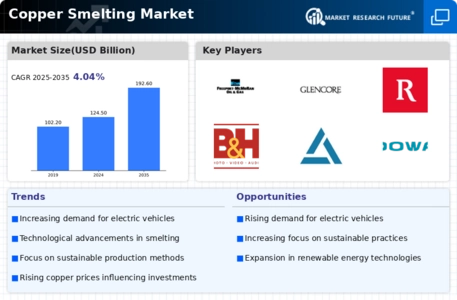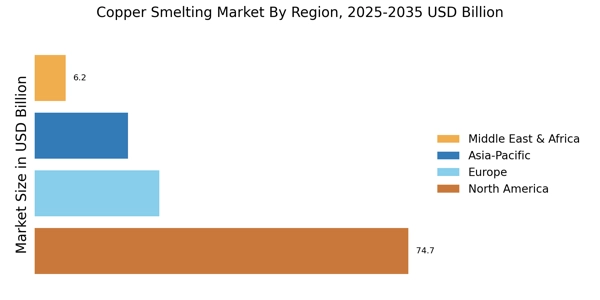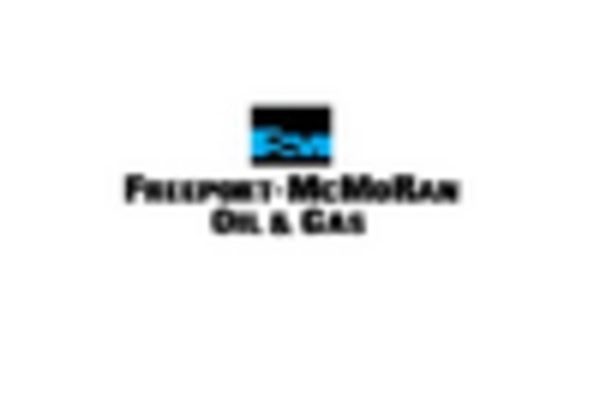Infrastructure Development Initiatives
Infrastructure development initiatives across various regions serve as a critical driver for the Copper Smelting Market. Governments are increasingly investing in infrastructure projects, including transportation, energy, and urban development, which require substantial quantities of copper. For instance, the construction of new power plants and renewable energy facilities necessitates extensive copper wiring and components. In 2025, it is estimated that infrastructure projects will account for nearly 30% of copper consumption, underscoring the metal's importance in construction and energy sectors. This surge in infrastructure spending is likely to stimulate demand for copper smelting, as producers ramp up output to meet the needs of these large-scale projects. As such, the Copper Smelting Market stands to benefit from ongoing and future infrastructure investments.
Rising Demand for Copper in Electronics
The increasing demand for copper in the electronics sector is a notable driver for the Copper Smelting Market. As technology advances, the need for copper in electrical wiring, circuit boards, and various electronic components continues to grow. In 2025, the electronics industry is projected to consume approximately 25% of the total copper production, highlighting the metal's essential role in modern technology. This trend is likely to propel the copper smelting sector, as manufacturers strive to meet the rising demand. Furthermore, the shift towards electric vehicles, which require substantial amounts of copper for batteries and wiring, further amplifies this demand. Consequently, the Copper Smelting Market is expected to experience significant growth as it adapts to the evolving needs of the electronics sector.
Increasing Recycling of Copper Materials
The increasing recycling of copper materials is a noteworthy driver for the Copper Smelting Market. As the world becomes more conscious of resource conservation and waste reduction, the recycling of copper scrap is gaining traction. In 2025, it is estimated that recycled copper will account for nearly 30% of the total copper supply, reflecting a growing trend towards circular economy practices. This shift not only reduces the need for primary copper production but also supports the smelting industry by providing a steady supply of raw materials. The Copper Smelting Market is likely to benefit from this trend, as smelters adapt to incorporate recycled materials into their processes, thereby enhancing sustainability and reducing environmental impact.
Growing Emphasis on Renewable Energy Sources
The Copper Smelting Industry. As countries strive to reduce carbon emissions and transition to sustainable energy, the demand for copper in renewable energy technologies, such as solar panels and wind turbines, is expected to rise. In 2025, the renewable energy sector is projected to require approximately 20% of the total copper supply, reflecting the metal's critical role in energy efficiency and sustainability. This trend not only enhances the market for copper smelting but also encourages innovation in smelting processes to support environmentally friendly practices. The Copper Smelting Market is thus likely to see increased activity as it aligns with the global push for cleaner energy solutions.
Technological Innovations in Smelting Processes
Technological innovations in smelting processes represent a vital driver for the Copper Smelting Market. Advances in smelting technology, such as the development of more efficient and environmentally friendly methods, are transforming the industry. For instance, the introduction of flash smelting and other innovative techniques has significantly reduced energy consumption and emissions associated with copper production. In 2025, it is anticipated that these advancements will lead to a 15% increase in production efficiency, allowing smelters to meet rising demand while minimizing environmental impact. This focus on technological improvement not only enhances the competitiveness of the Copper Smelting Market but also aligns with global sustainability goals, making it a crucial factor for future growth.


















Leave a Comment